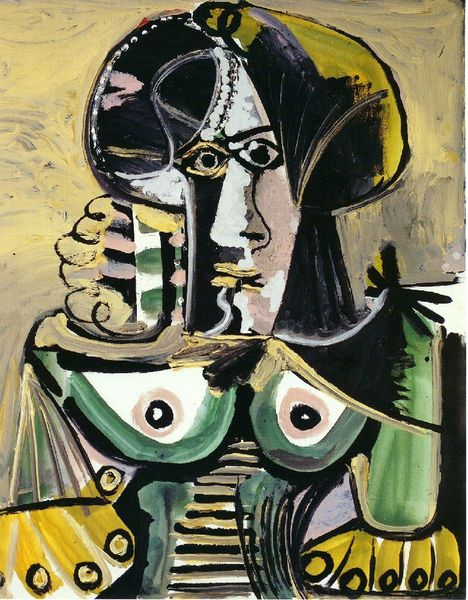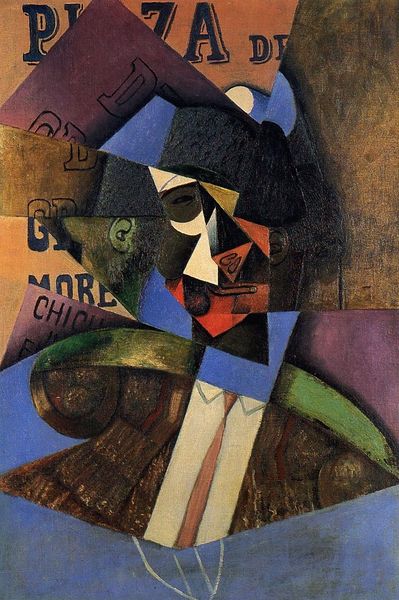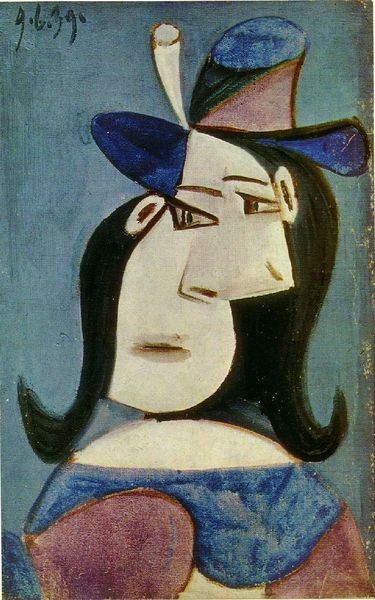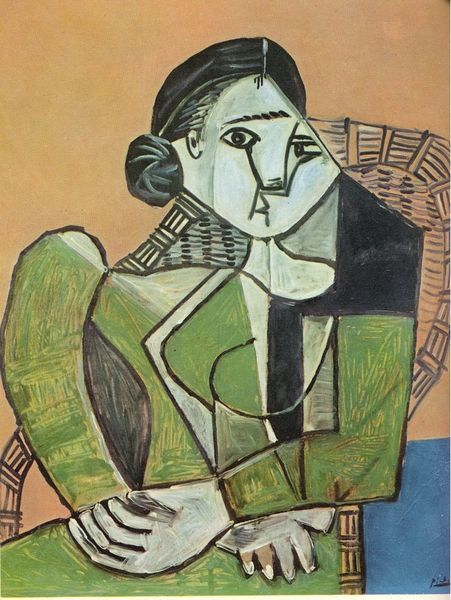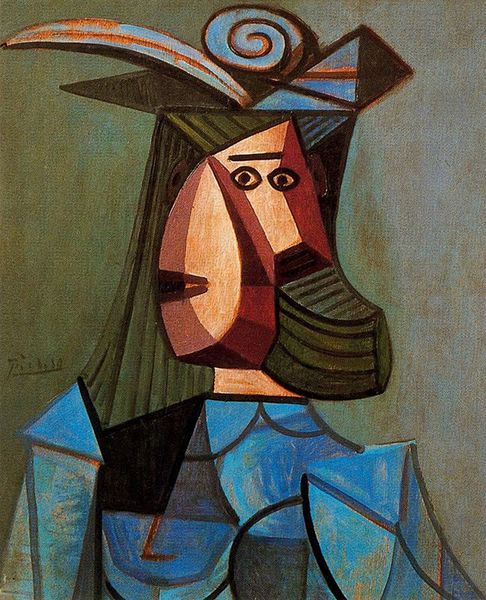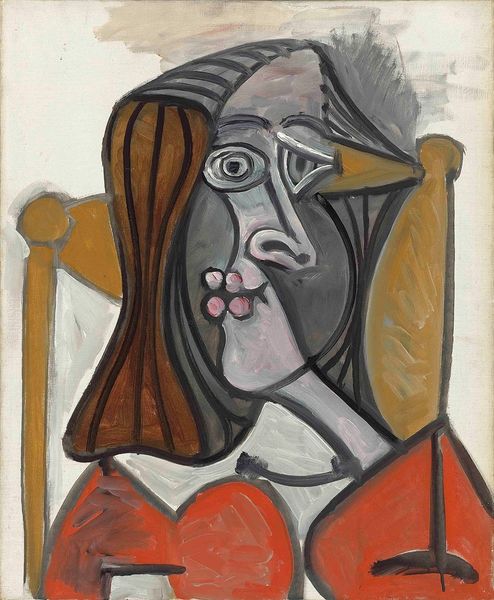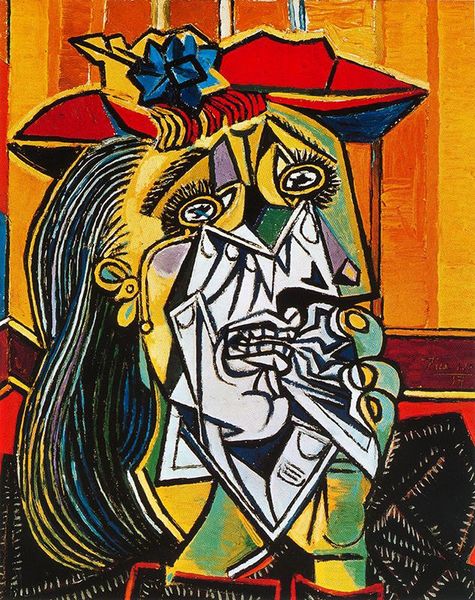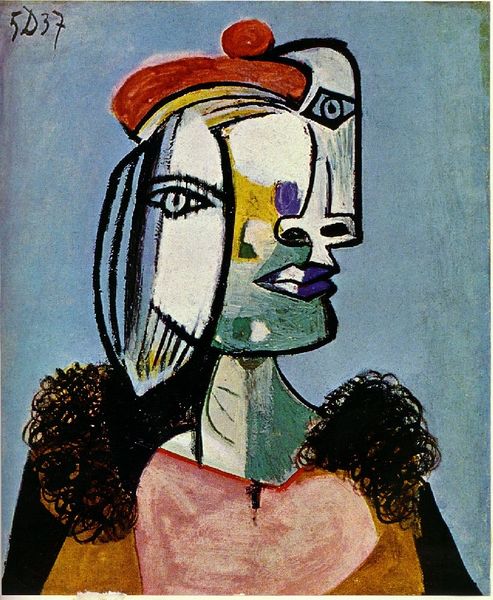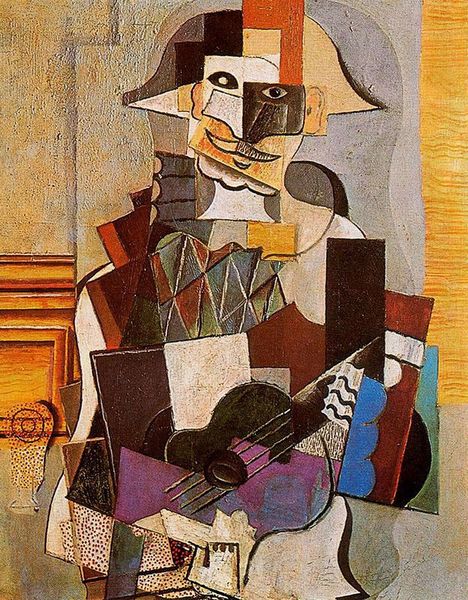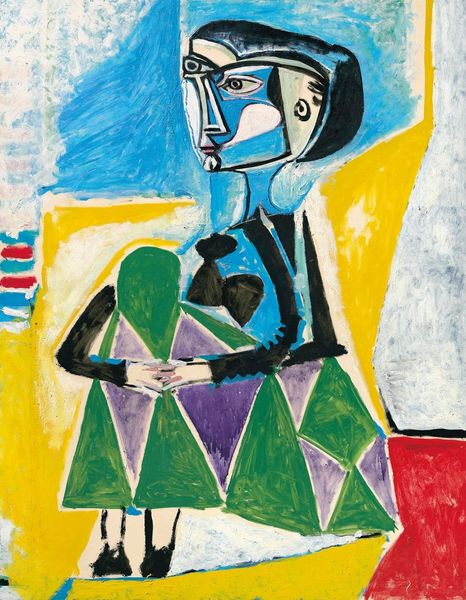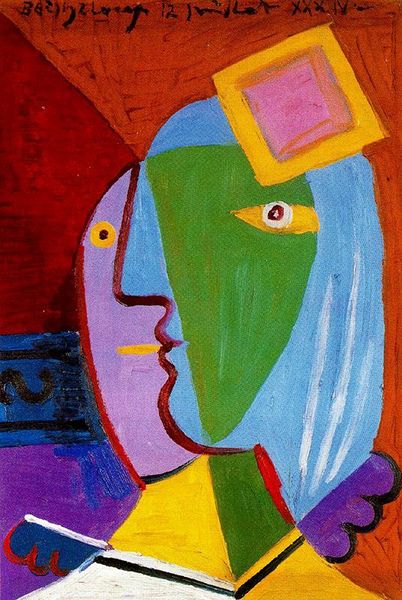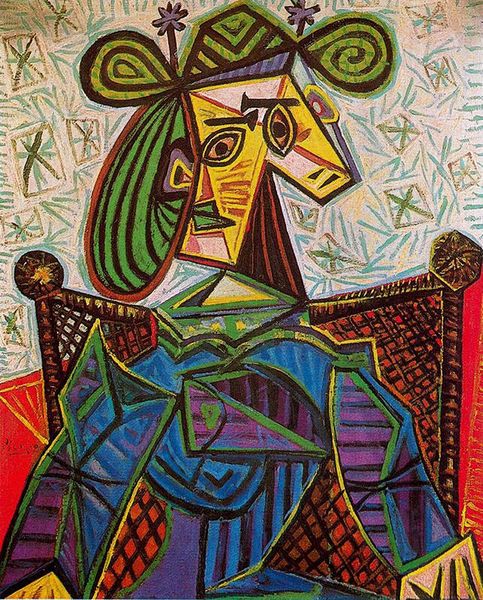
painting, oil-paint
#
portrait
#
cubism
#
painting
#
caricature
#
oil-paint
#
caricature
#
pop art
#
figuration
#
modernism
Copyright: Pablo Picasso,Fair Use
Editor: So, this is Picasso's "Dora Maar," painted in 1939 using oil on canvas. I'm really struck by the way he's distorted her features – it's almost like a caricature. What stands out to you about this piece? Curator: I’m drawn to how Picasso is experimenting with the very act of representation. The way he manipulates the material – the oil paint – to construct and deconstruct the figure isn’t just about portraying Dora Maar, it’s about revealing the constructed nature of identity itself. Editor: That's interesting! What do you mean by "constructed nature"? Curator: Well, think about it. He's taking apart the conventional way of painting a face. Each brushstroke is a decision, a choice of material application. Is he challenging the societal expectations placed upon women through his fragmentation of Dora's image, highlighting the consumption of the female figure as art? Editor: I hadn't considered it in terms of social expectations and consumption! It does make you wonder about the power dynamics at play when the artist and the subject are in a relationship. Curator: Precisely. The materiality itself – the thickness of the paint, the angularity of the lines – it all speaks to a certain violence, or at least a disruption of traditional notions of beauty and representation. Editor: It's definitely not your typical flattering portrait! Looking at it this way, I see a commentary on both the art-making process and the cultural context surrounding the subject. Curator: Yes! By dissecting and reassembling the figure, Picasso also invites us to question the social and economic structures influencing their relationship. Material becomes metaphor. Editor: This has given me so much to consider. It’s more than just a portrait; it’s a commentary. Curator: Absolutely. And that’s the power of art when we start unpacking the materials, labor and ideas behind its creation.
Comments
No comments
Be the first to comment and join the conversation on the ultimate creative platform.
